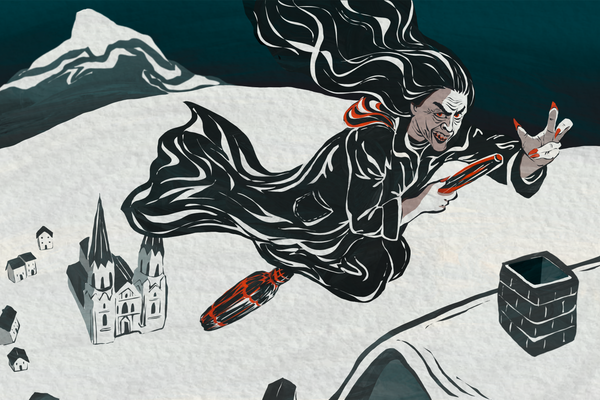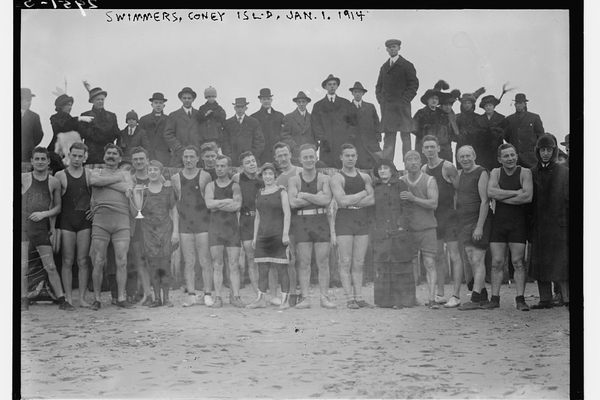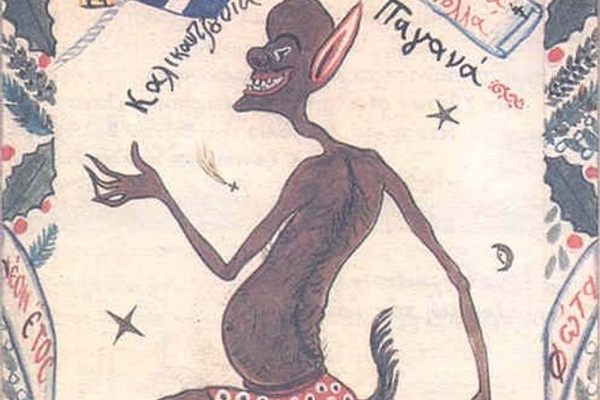Will the Gavle Goat Burn?
The Gävle Goat in 2009 (photograph by Tony Nordin)
Will this be a year the Gävle Goat survives the flames? Since 1966 when the first giant Yule Goat went up in Gävle, Sweden, the goat — known as the Gävlebocken — has been burned 26 times.
This year, however, the local officials are feeling positive the goat is flameproof. As the Local reported: “Gävle confident its 2013 Xmas goat won’t burn,” and a Gävle spokesman had this to proclaim:
“We’ve made it from material that’s a little stronger this year, so it should be much harder to burn down. But we’re aware that the goat is only famous because it gets burned. It would be great if it didn’t actually burn down this year, because that would be the most unexpected result. Then we might really get a lot of attention.”
The goat burns in 2011 (via the goat’s webcam)
However, the mammoth straw goat does have the odds against it, having only escaped destruction a handful of times in its history. Each year the 40-foot-tall goat it is constructed in the town’s central square and has a grand celebration for its unveiling on November 30. Last year it only survived until December 12, and in the past it’s been hit by cars, attacked by a Gingerbread Man, and almost stolen with a helicopter. People now annually place bets on its lifespan.
The Yule Goat (via Wikimedia)
The Gävle Goat is a towering version of the Yule Goat that is a popular Christmas tradition in Scandinavia. It has pagan origins and was once depicted as the companion bringer of holiday gifts with Saint Nicholas before Santa ruined the fun. While the tradition of waiting for the goat to burn has become as popular as the Gävle Goat itself, the town has far from embraced this unruly rite of winter. Instead, security continues to be added and it is monitored with a live web cam (which, alas, tends to just capture the quick flame destruction of the heap of kindling).
The Gävle Goat in 2005 (photograph by Johan Karlborg)
You can follow the Gävlebocken on Twitter, who tweets in both Swedish and English, and new for this year is Instagram, a strong show in confidence that there won’t be a play-by-play social media eulogy of the goat’s demise.
Here’s a brief history of the rise and fall of the Gävle Goat:
1966 - The first goat appears in Gävle. It is burned at midnight on New Year’s Eve.
1969 - The Goat again sees Christmas and is torched on New Year’s Eve.
1970 - The Goat only survives six hours before it is burned.
1972 - The Goat is sabotaged and collapses.
1974 - The Goat is burned.
1976 - Someone hits the Goat with their Volvo and it collapses.
1978 - The Goat is attacked and kicked to bits.
1979 - The Goat is burned before it is completed and another one is built that is made fireproof, but is still destroyed.
1980 - On Christmas Eve, the Goat is burned.
1982 - On December 13, the Goat is burned.
The goat in snow (photograph by mrpants/Flickr user)
1983 - The Goat is attacked, but only its legs are demolished.
1985 - The Goat is protected by a six-foot-high metal fence and guarded by soldiers, but is burned in January.
1986 - The Goat burns the day before Christmas Eve.
1987 - The Goat is built to be fireproof, but is burned a week before Christmas.
1989 - The Goat is burned before it is finished. Another is built and burned in January.
1991 - The Goat is burned on Christmas Eve.
1992 - The Goat is burned only eight days after its construction.
1995 - Someone is arrested while trying to burn it, and while he was stopped, it is still burned down on Christmas.
1997 - The Goat is hit by fireworks.
1998 - The Goat survives a huge blizzard, but is burnt on December 11.
1999 - The Goat survives only two hours before burning.
2000 - The Goat is burned just after New Year’s.
2001 - An American tourist sets the Goat on fire thinking it was a legal tradition. He was fined $14,700 (which he never paid) and spent a month in jail.
2003 - The Goat is burned on December 12.
2004 - Hackers attack the Goat’s website and add the text “Brinn Bockjävel” (“burn the fucking goat”) to one of the live web cam feeds.
2005 - The Goat is burned on December 3 by two people, one disguised as Father Christmas and the other as a Gingerbread Man who attack it with flaming arrows. The attack is followed by a string of Yule Goat arsons around Sweden.
The goat in 2006 (photograph by Casey Bisson)
2006 - A drunk man climbs onto the Goat, but it is not burned.
2008 - The Goat sees Christmas, but is burned on December 27.
2009 - The Goat is burned on December 23.
2010 - Two people attempt to steal the Goat with a helicopter.
2011 - The Goat is drenched in water with the theory that it would freeze and make it harder to burn. Unfortunately, the warmer weather causes this to not work, and the Goat is burned in early December.
The goat burns in 2012 (via the goat’s webcam)
2012 - The Goat goes up in flames on December 12. Its arsonists are revealed when they post photographs of matching goat tattoos online, showing the Gävlebocken in flames with the date of its demise.
GAVLE GOAT, Gävle, Sweden










Follow us on Twitter to get the latest on the world's hidden wonders.
Like us on Facebook to get the latest on the world's hidden wonders.
Follow us on Twitter Like us on Facebook